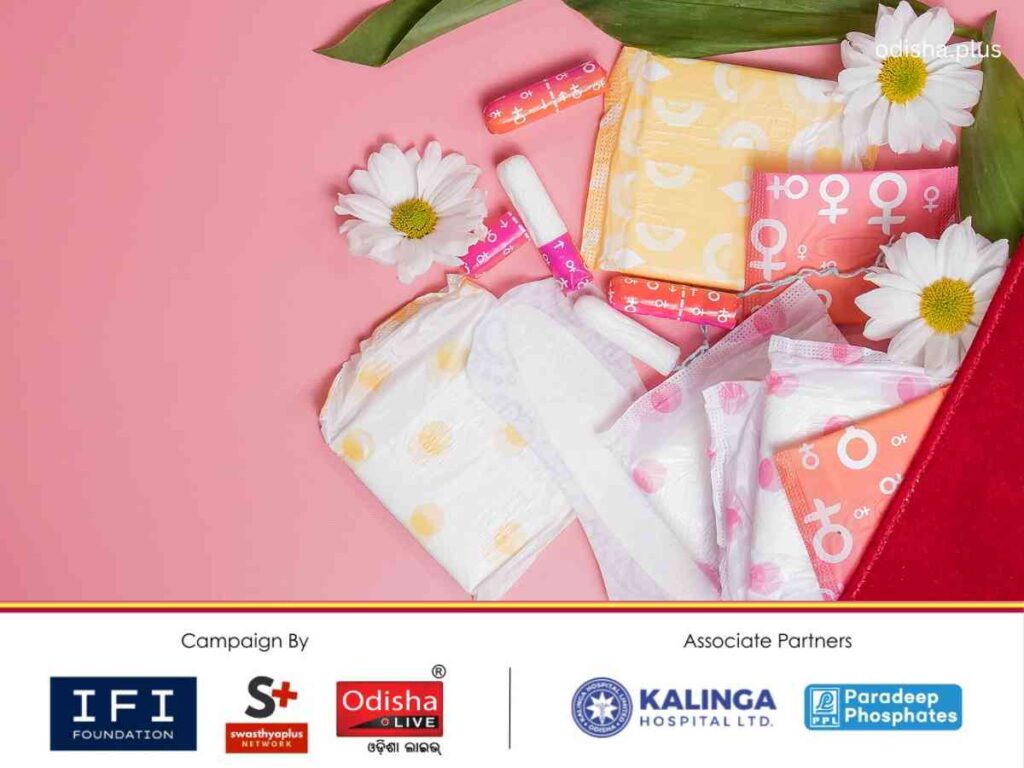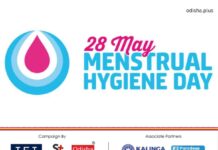Unless we address this head-on, our efforts to ensure gender equality, improve adolescent health or even keep girls in school will fall short
Trina Chakrabarti

In the tribal hamlets of Odisha’s hinterlands, 12-year-old Sarathi Nag from Balangir district and Sasmita Majhi from Kalahandi are not just learning to manage their periods with dignity—they are learning to reclaim control over their bodies, their choices and their futures. This change, though deeply personal, is also profoundly impactful. It challenges years of silence, shame, and societal neglect surrounding menstruation—especially for girls from marginalized communities.
As we mark Menstruation Day this year, we must confront an uncomfortable but urgent truth: menstrual health is still treated as a taboo in many parts of India. For adolescent girls, especially those in tribal and rural areas, this stigma often comes at the cost of health, education and dignity. And unless we address this head-on, our efforts to ensure gender equality, improve adolescent health, or even keep girls in school will fall short.
Menstrual Health: Not Just Hygiene, But Empowerment
At CRY, we believe menstrual health education is about more than distributing sanitary pads or organizing hygiene sessions. It is a critical lever for social transformation. It shapes how girls perceive themselves and how their communities treat them. It influences whether a girl drops out of school because she has no private space to manage her period or whether she attends classes with confidence. It determines whether her pain is ignored as a private matter or addressed as a public health issue.
Menstruation, for all its biological normalcy, is still cloaked in misinformation, superstition, and fear. In the communities we work with across Odisha—in districts like Balangir, Bargarh, and Kalahandi—we’ve come across girls still afraid to talk about their first period, believing it to be a disease or punishment. And there are mothers and grandmothers who still isolate girls during menstruation, who deny them certain foods, restrict their movements, or stop them from attending school.
In such a context, the work of breaking this silence becomes not just necessary, but revolutionary.
The Power of Knowledge and Peer Support
When girls get accurate, age-appropriate information about menstruation—how it works, how to manage it hygienically, how to respond to discomfort—they acquire more than facts. They gain confidence, control over their health and a language to describe what they’re experiencing. This language empowers them to ask for help, seek medical attention, or support a friend.
One of the most transformative elements of our intervention has been the formation of Adolescent Girls Collectives—safe spaces where girls meet monthly to learn about not only menstrual health, but also life skills, sexual and reproductive health, body awareness, and nutrition. Here, they share stories, ask questions without fear, and normalize what should never have been stigmatized in the first place.
In Sarathi’s village, for instance, we found that the simple act of talking about menstruation—openly, regularly, and with respect—helped reduce the stigma that had silenced generations. Sarathi, who once suffered silently when her first period began, now understands how to manage her periods safely and hygienically. With the support of our grassroots partner Palli Alok Pathagar (PAP), she also encouraged her younger cousin to attend the sessions, creating a ripple effect of awareness in her family.
Breaking Intergenerational Silence
It is not enough to reach girls alone. Often, the silence around menstruation is reinforced by families—many of whom, while well-meaning, perpetuate myths and restrictions because no one taught them differently.
That’s why our programme engages parents and caregivers as equal partners. Through home visits and family counselling, we help communities unlearn age-old taboos and instead view menstruation as a natural biological process. In Sasmita Majhi’s case, it was her mother’s openness to learn that helped improve not only Sasmita’s menstrual hygiene but also created a supportive environment for her younger sisters.
Engaging mothers also builds a bridge between traditional knowledge and modern health practices. Many older women have deep concerns about hygiene or nutrition but lack the vocabulary or platforms to talk about them. When we hold community sessions or involve Anganwadi workers and ASHAs in awareness campaigns, we create a shared learning space where both generations grow.
From Awareness to Well-being
There is a direct connection between menstrual awareness and overall health consciousness. In our intervention areas, we observed that girls who understood menstruation better also became more proactive about nutrition, hydration, and hygiene. They were more likely to take iron-folic acid (IFA) tablets regularly, follow healthy food habits, and attend Village Health and Nutrition Days (VHNDs) for check-ups.
In fact, improved menstrual health awareness has helped us improve not just physical health indicators like haemoglobin levels, but also mental and emotional well-being. Girls feel less anxiety and shame. They are more likely to stay in school during their periods. They participate more confidently in community life.
The Special Challenge of Marginalization
For girls from economically disadvantaged communities, the challenges are often magnified. Geographic isolation, lack of access to adolescent-friendly health services, and the double burden of poverty and patriarchy make menstruation even more difficult to manage.
Yet, these are also the communities where change has the most profound impact. When a girl like Sarathi from a remote tribal village starts attending school more regularly because she is no longer afraid of staining or being teased, that is a radical shift. When her mother starts discussing periods without shame, that is a cultural milestone. When local health workers prioritize adolescent girls in their rounds, that is public policy in action.
What We Need to Do Next
To make menstrual health truly universal, we need to invest more in adolescent health education—both in and outside schools. We must ensure access to clean and affordable sanitary products, but also safe disposal systems. We must normalize the conversation across classrooms, households, and media platforms. And we must include boys and men in the conversation—not just as allies, but as co-owners of a society where menstruation is not stigmatized.
At CRY, we’re proud of the impact we’ve had so far—over 2,000 adolescent girls across 64 villages in Odisha reached through sustained intervention. But we know this is just the beginning.Because menstruation is not just a matter of hygiene. It is a matter of equity, education, and empowerment. It is a test of whether we are truly committed to giving every girl the chance to grow into a healthy, confident woman—without shame, without fear, and without silence.
On this Menstruation Day, let’s pledge to break the taboo, one conversation at a time.
(The Author is the Regional Director – East, Child Rights and You (CRY). Views are Personal.)
























